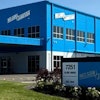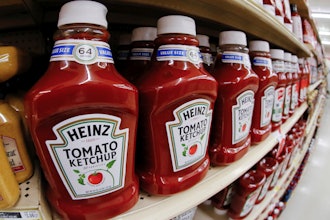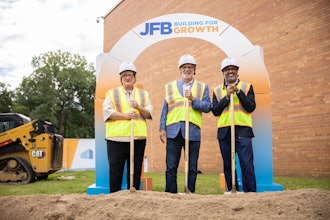Most food manufacturers know that the cost of a new conveyor system (or any new machinery) is more than just the price tag: considering the total cost of ownership is key.
Food companies big and small are increasingly turning to industry resources like Total Cost of Ownership tools, published by OpX, a PMMI-leadership network, to determine a figure. Total cost of ownership is not just capital; it’s installation, startup, spare parts, maintenance, power etc. Of course, arriving at an accurate number can be difficult. However, one way to help calculate the cost is to look at the true value a conveyor — and its manufacturer — provides you.
Identifying the Right Conveyor Manufacturer
Conveyors today have become integral components in all phases of the food manufacturing process. And while some of the dominant global brands have been the earliest adopters to embrace the full potential of conveyors, more companies of all sizes are taking a closer look at how they too can better integrate conveyor systems to ultimately improve their food processing and packaging lines.
Many conveyor manufactures are happy to just sell you a piece of equipment and be done. That’s not the type of company you want to do business with, because they’re not providing you with any practical long-term value. Anyone can sell you a conveyor, but not everyone has the wherewithal to analyze your entire line and look for ways to improve efficiencies.
The type of company you want on your side is one looking at a total line solution; a company that wants to know what’s occurring upstream and downstream of the conveyor and determine how their equipment can best complement the entire line. Often, this research leads a manufacturer to recommend alternatives to the in-feed and out-feed processes, and related functions, to make the line more efficient.
To help get the most out of your conveyor system, a competent manufacturer analyzes all aspects of your application, and asks the right questions up front to ensure the equipment they are designing will meet your desired production rates and efficiently get the job done. Cutting corners is not an option. Rather, manufacturers must diligently take the extra steps outlined in their work protocol…and it starts with application expertise.
Application Expertise
No two applications are the same. Conveyors today are built to your specifications to improve efficiency, output and sanitation requirements of your food production line. There’s no reason to settle for a conveyor that’s being shoe-horned into your application, especially when a system can be engineered to seamlessly integrate into a larger process.
But to do that requires an understanding of what the goals and expectations are for your conveyors – in other words, what do you need your conveyors to do? Knowing this upfront will set you up for success with a conveyor system that’s designed to perform – and perform well.
Whether you’re an OEM or integrator, a small family-owned food manufacturer or a multinational brand, everyone has the same concerns regarding their new conveyor system. A good place to start is by considering these questions:
- How do you see the conveyor system integrating with what you’re trying to build?
- Where is the conveyor system going to be located in your plant?
- What is the height, weight and shape of the product(s) being moved?
- What are the sanitary requirements for the conveyor system?
- How often will the conveyor system need to be washed/sanitized?
- What’s the targeted rate of production?
- How much space is available for the conveyors?
- Is space likely to be tight, requiring conveyors to make sharp turns or go up inclines?
- Is the machine/production line manual or automated?
- Is the anticipated flow of production linear or oval?
- Does the product need to be orientated in a specific way while on the conveyor?
Knowing this information upfront helps define the scope of the project and allows the conveyor supplier to streamline the quotation process by gaining a more complete picture of the application.
You should consider these questions to help envision how the conveyors should interact with the processing/packaging line or project they’re integrating with. All components within a food manufacturing line should work together to best augment the overall operation. Answering those questions will help you take a critical look at your conveyor system to determine where improvements in product flow and handling can be made. Your analysis may determine no improvements are necessary, and that’s great. But if your planned conveyor system isn’t quite matching with the other components in the application, or targeted output is in jeopardy, it’s time for review. This is where a reputable conveyor supplier proves their worth.
Perhaps more valuable than the actual conveyors are a supplier’s knowledge and experience of food manufacturing in designing a system that integrates with other components of a project. Having a collaborative discussion with a conveyor supplier to learn about the project and talk through issues that may cause a roadblock is a great way to start. A supplier will accept that responsibility and do the heavy lifting for you by delivering a conveyor system that’s designed specifically for your application.
Of course, this collaboration won’t necessarily result in a custom solution, as custom often equates to more expensive. A supplier’s recommendation is typically based on using standard products as much as possible, while integrating custom designs when necessary to provide the reliability and flexibility that the job calls for. That’s why a one-size-fits-all conveyor isn’t always the best choice. The goal of a well-designed conveyor system is to fit your process, rather than the process fitting the conveyor.
For all projects big or small, ongoing design review meetings with the conveyor manufacturer is something that is available to ensure parameters and deadlines are being met. The bottom line is that communication is a must in the design process to successfully launch projects, and effectively manage any aspects that may need adjustment as it moves toward completion.
Line Integration
In many cases, your conveyor system is going to be integrated with other components either upstream or downstream, and it all needs to be connected for seamless operation. That can sometimes be easier said than done.
As one of the last functions of the installation process, line integration needs to be something discussed early with your conveyor manufacturer. Questions to ask include:
- Will they work to integrate your filler with the rest of the line?
- Do they have the knowledge to complete the integration?
- Will they manage the integration even if upstream or downstream components are outside their scope of work?
- Do they offer the proper controls for conveyor integration?
The critical aspect here is ensuring the conveyor manufacturer has the manpower, competency and expertise to coordinate and manage the line integration. If the integration is not done correctly, everything on that line could be affected. Parameters within the conveyor system can change day to day, even hour by hour, and when that does, the line needs to be properly in sync for uninterrupted production.
Conclusion
Competition breeds options, which is why there are no shortage of vendors willing to sell you a conveyor. But there are major differences between manufacturers. The key is to select a partner that adds value both before and after the sale is completed. The first step is to evaluate your application and determine the expectations for your conveyor system. Manufacturers are available to assist you in this. The right conveyor system is out there, it’s just waiting to be designed.
Mike Hosch is Vice President – Industrial Products at Dorner Manufacturing.






















